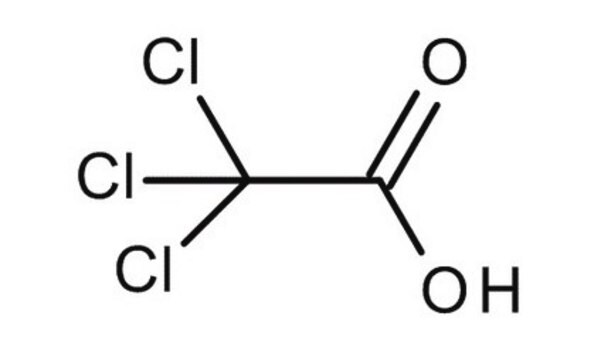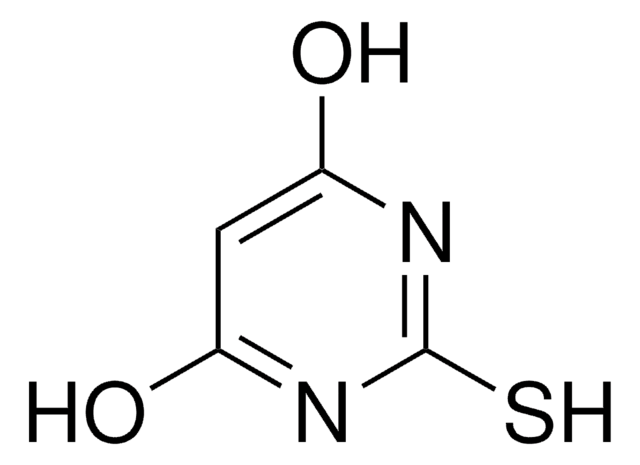T4885
Trichloroacetic acid
≥99.0% (titration)
Synonym(s):
TCA
About This Item
Recommended Products
vapor density
<1 (vs air)
Quality Level
vapor pressure
1 mmHg ( 51 °C)
assay
≥99.0% (titration)
refractive index
n20/D 1.62 (lit.)
bp
196 °C (lit.)
mp
54-58 °C (lit.)
solubility
H2O: 1 g/10 mL
density
1.62 g/mL at 25 °C (lit.)
storage temp.
2-8°C
SMILES string
OC(=O)C(Cl)(Cl)Cl
InChI
1S/C2HCl3O2/c3-2(4,5)1(6)7/h(H,6,7)
InChI key
YNJBWRMUSHSURL-UHFFFAOYSA-N
Looking for similar products? Visit Product Comparison Guide
Application
- β-enaminones via condensation reaction of 1,3-dicarbonyl compounds and amines.
- 6-amino-3-methyl-1,4-diphenyl-1,4-dihydropyrano[2,3-c]pyrazole-5-carbonitrile derivatives via four-component condensation reaction of ethyl acetoacetate, phenylhydrazine, malononitrile, and aromatic aldehydes.
- Tetrahydrobenzo[a]xanthen-11-ones by three-component reaction of aldehydes, 2-naphthol and dimedone.
signalword
Danger
hcodes
Hazard Classifications
Aquatic Acute 1 - Aquatic Chronic 1 - Eye Dam. 1 - Skin Corr. 1A
Storage Class
8B - Non-combustible corrosive hazardous materials
wgk_germany
WGK 2
flash_point_f
>235.4 °F - closed cup
flash_point_c
> 113 °C - closed cup
ppe
Eyeshields, Faceshields, Gloves, type P3 (EN 143) respirator cartridges
Choose from one of the most recent versions:
Already Own This Product?
Find documentation for the products that you have recently purchased in the Document Library.
Our team of scientists has experience in all areas of research including Life Science, Material Science, Chemical Synthesis, Chromatography, Analytical and many others.
Contact Technical Service





